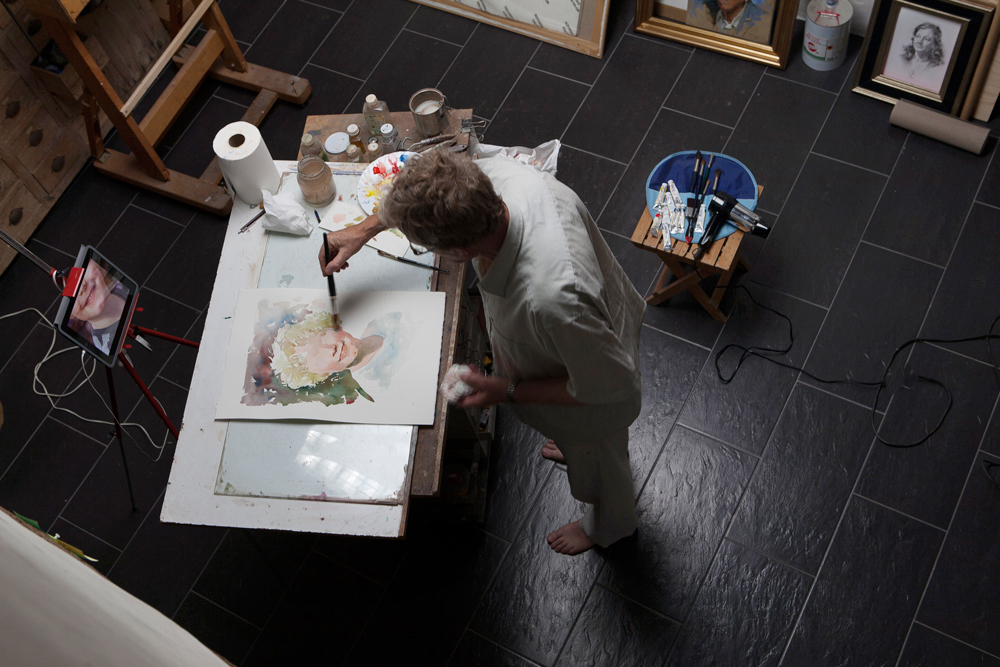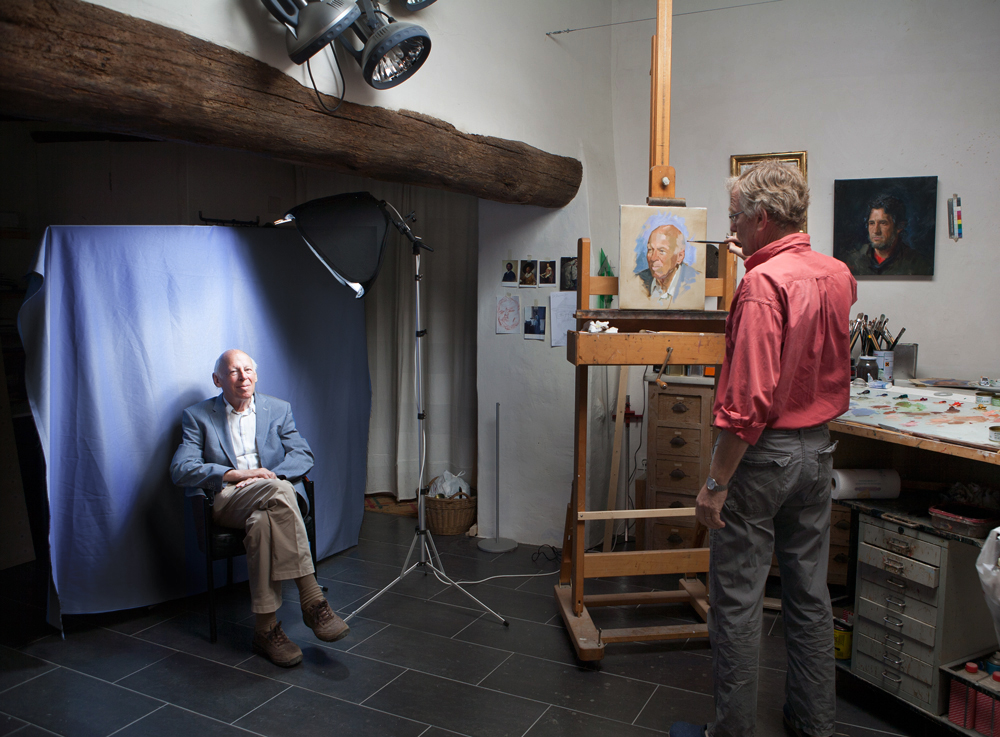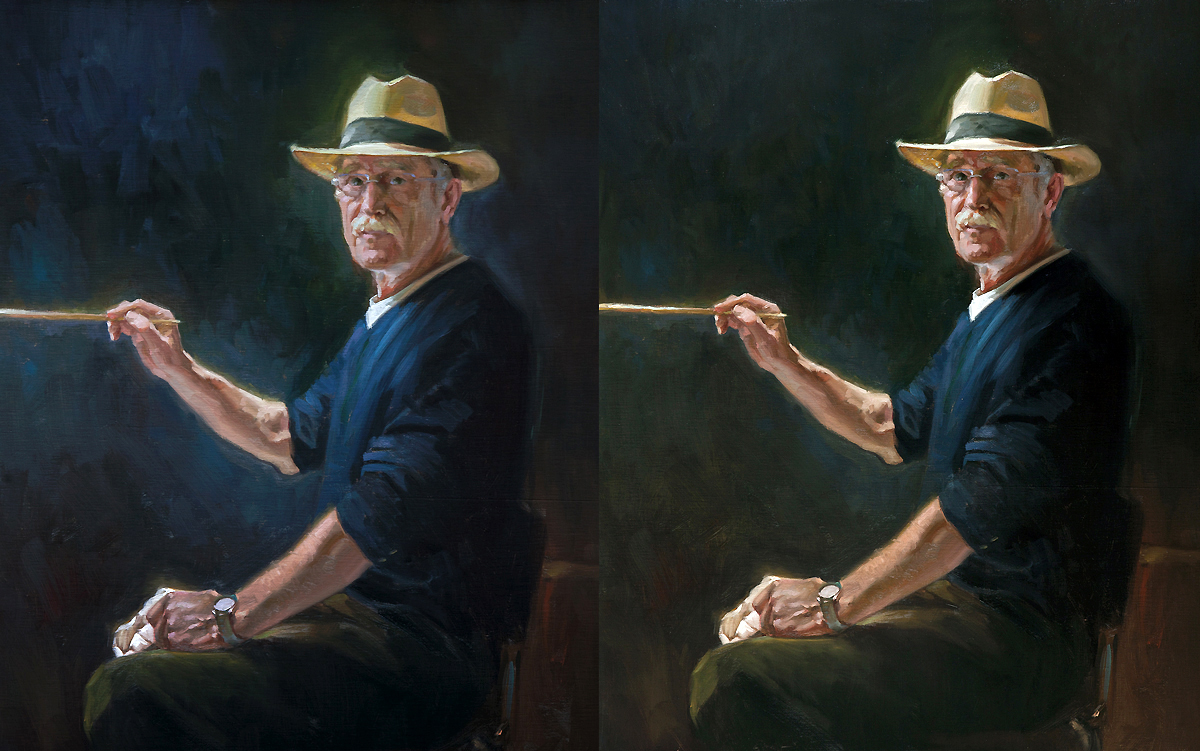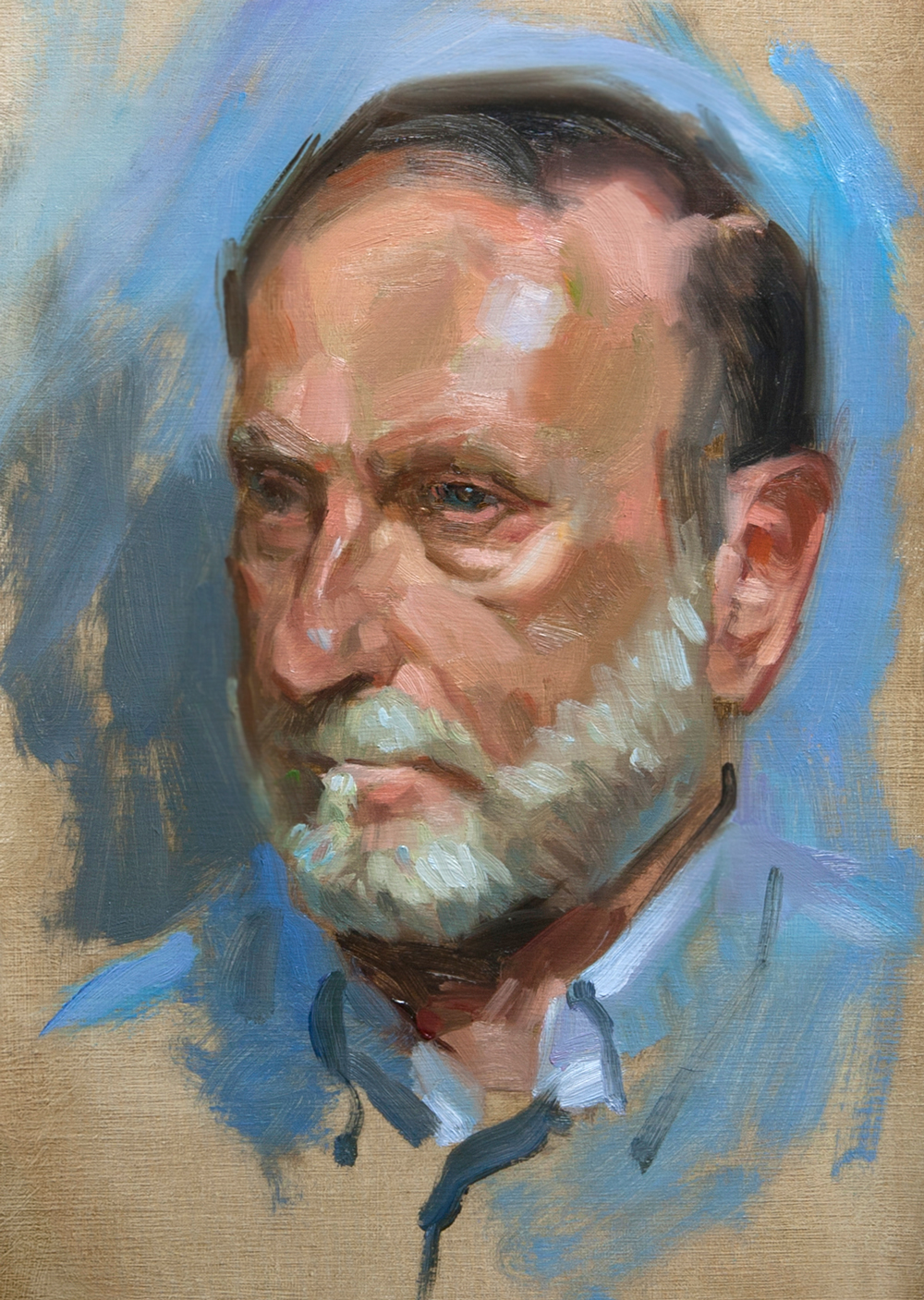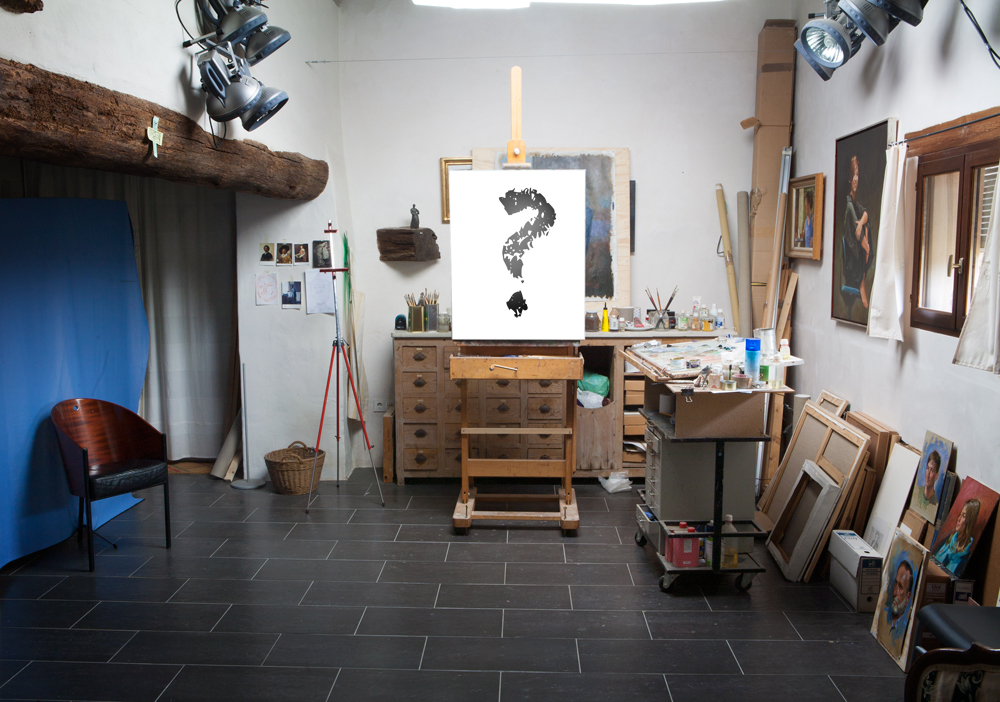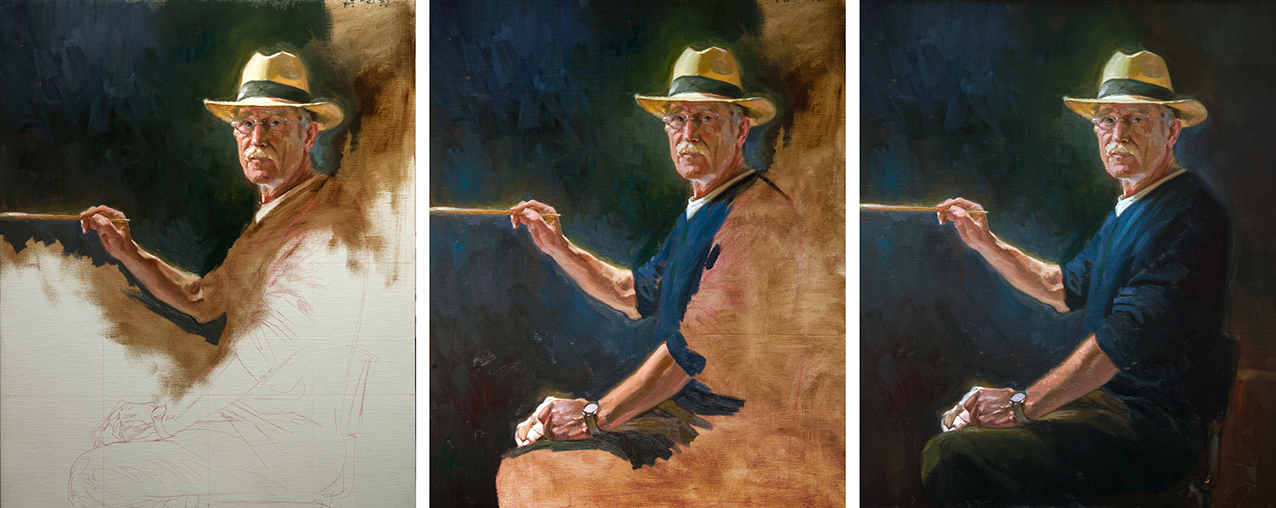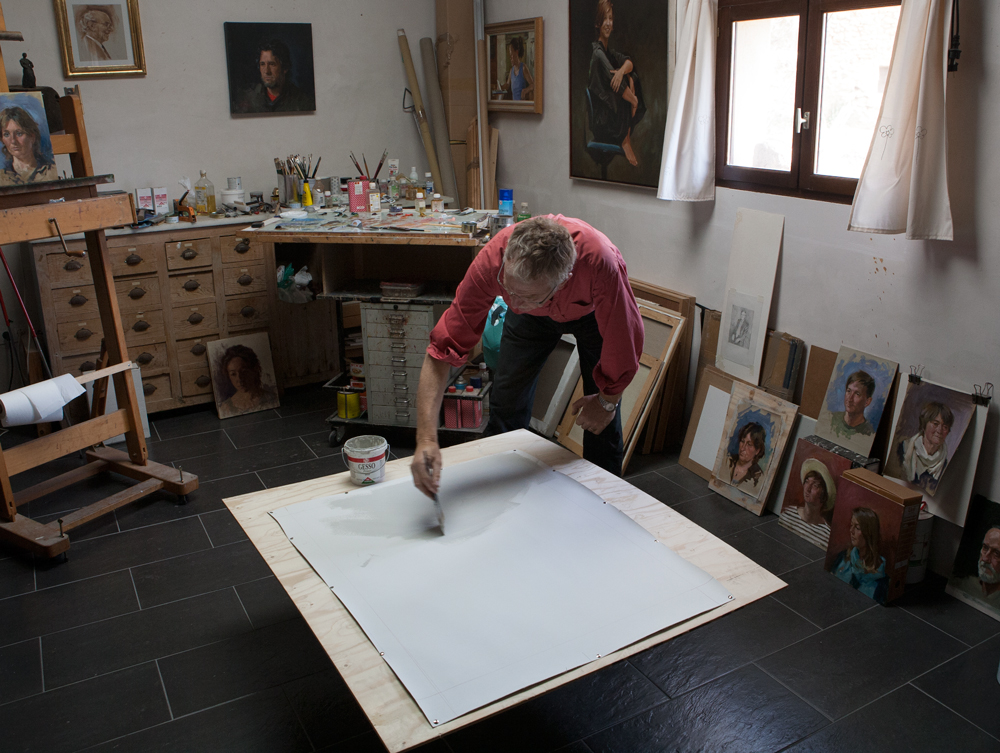“If you are self-employed, do you need a lot of self-discipline?” someone asked me a long time ago. “Of course!” was my answer, “because you need to know when to stop.” Unless you pay attention, you find yourself day and night behind the easel. I have had to think of that now I am seized with “watercolour fever”.
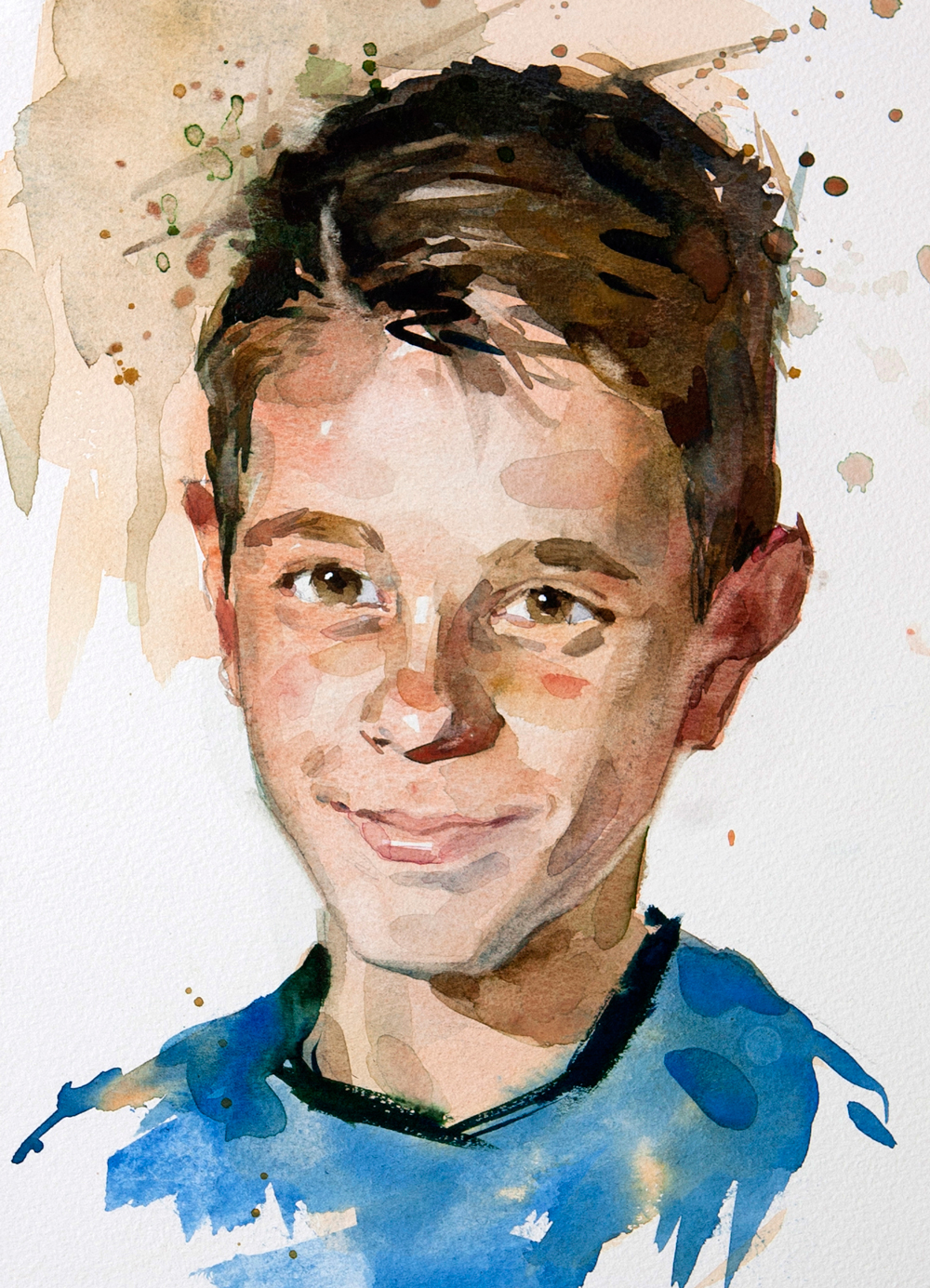
Two weeks ago I wrote you about a commission in watercolour. I finished the job but I could not shake myself free of watercolours as they captivated me. I attacked (after Van Gogh) a number of portraits in this beautiful technique. The working method in watercolour is opposed to that of oil. In oil you immediately start with the darkest parts, then the half tones and finally the lights. On the contrary, in watercolour you start with the light areas, (saving the high lights). Then the halftones and finally the darkest parts.
Already people have asked me for a tutorial and I have put it on the agenda for next year. Next post will be on the preparations for a watercolour portrait.

The colours on my palette:
- Cadmium Lemon Yellow
- Cadmium Red Light
- Yellow Ochre
- Raw Sienna
- Alizarine Crimson
- Phtalo Blue
- Cerulean Blue
- Sap Green
- Hookers Green
I prefer to work on Arches France, Bockingford or Fabriano paper.


